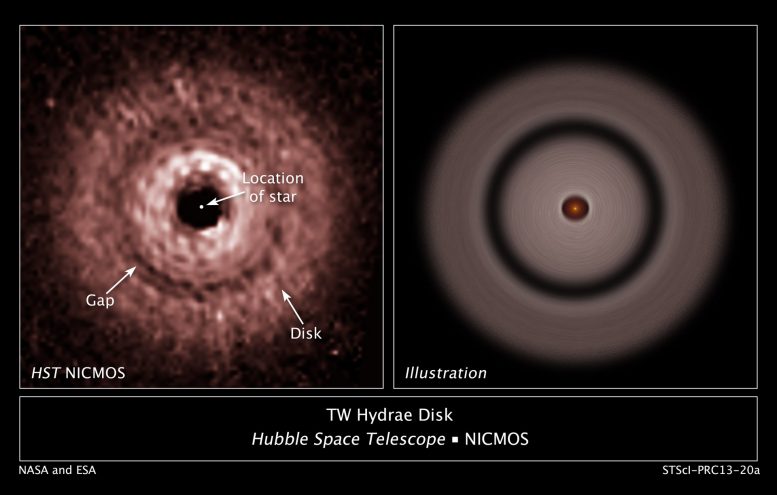
This graphic shows a gap in a protoplanetary disk of dust and gas whirling around the nearby red dwarf star TW Hydrae, which resides 176 light-years away in the constellation Hydra, sometimes called the Sea Serpent. The gap’s presence is best explained as due to the effects of a growing, unseen planet that is gravitationally sweeping up material and carving out a lane in the disk, like a snow plow. In the left image, astronomers used a masking device on the Hubble Space Telescope’s Near Infrared Camera and Multi-Object Spectrometer to block out the star’s bright light so that the disk’s structure could be seen. The Hubble observations reveal that the gap, which is 1.9 billion miles wide, is not completely cleared out. The illustration at right shows the gap relative to the star. The Hubble observations were taken on June 17, 2005. Credit: NASA, ESA, J. Debes (STScI), H. Jang-Condell (University of Wyoming), A. Weinberger (Carnegie Institution of Washington), A. Roberge (Goddard Space Flight Center), G. Schneider (University of Arizona/Steward Observatory), and A. Feild (STScI/AURA)
Scientists using the Hubble Space Telescope have discovered evidence that a planet is forming 7.5 billion miles away from its star in a vast protoplanetary disk of gas and dust, a finding that could challenge current theories about planet formation.
Of the almost 900 planets outside our solar system that have been confirmed to date, this is the first to be found at such a great distance from its star. The suspected planet is orbiting the diminutive red dwarf TW Hydrae, a popular astronomy target located 176 light-years away from Earth in the constellation Hydra the Sea Serpent.
Hubble’s keen vision detected a mysterious gap in a vast protoplanetary disk of gas and dust swirling around TW Hydrae. The gap is 1.9 billion miles wide and the disk is 41 billion miles wide. The gap’s presence likely was caused by a growing, unseen planet that is gravitationally sweeping up material and carving out a lane in the disk, like a snow plow.
The planet is estimated to be relatively small, at 6 to 28 times more massive than Earth. Its wide orbit means it is moving slowly around its host star. If the suspected planet were orbiting in our solar system, it would be roughly twice Pluto’s distance from the sun.
Planets are thought to form over tens of millions of years. The buildup is slow, but persistent as a budding planet picks up dust, rocks, and gas from the protoplanetary disk. A planet 7.5 billion miles from its star should take more than 200 times longer to form than Jupiter did at its distance from the sun because of its much slower orbital speed and the deficiency of material in the disk. Jupiter is 500 million miles from the sun and it formed in about 10 million years.
TW Hydrae is only 8 million years old, making it an unlikely star to host a planet, according to this theory. There has not been enough time for a planet to grow through the slow accumulation of smaller debris. Complicating the story further is that TW Hydrae is only 55 percent as massive as our sun.
“It’s so intriguing to see a system like this,” said John Debes of the Space Telescope Science Institute in Baltimore, Maryland. Debes leads a research team that identified the gap. “This is the lowest-mass star for which we’ve observed a gap so far out.”
An alternative planet-formation theory suggests that a piece of the disk becomes gravitationally unstable and collapses on itself. In this scenario, a planet could form more quickly, in just a few thousand years.
“If we can actually confirm that there’s a planet there, we can connect its characteristics to measurements of the gap properties,” Debes said. “That might add to planet formation theories as to how you can actually form a planet very far out.”
The TW Hydrae disk also lacks large dust grains in its outer regions. Observations from the Atacama Large Millimeter Array in Chile show dust grains roughly the size of a grain of sand are not present beyond about 5.5 billion miles from the star, just short of the gap.
“Typically, you need pebbles before you can have a planet. So, if there is a planet and there is no dust larger than a grain of sand farther out, that would be a huge challenge to traditional planet formation models,” Debes said.
The team used Hubble’s Near Infrared Camera and Multi-Object Spectrometer (NICMOS) to observe the star in near-infrared light. The researchers then compared the NICMOS images with archival Hubble data and optical and spectroscopic observations from Hubble’s Space Telescope Imaging Spectrograph (STIS). Debes said researchers see the gap at all wavelengths, which indicates it is a structural feature and not an illusion caused by the instruments or scattered light.
The team’s paper appears online in The Astrophysical Journal.
Reference: “The 0.5-2.22-micron Scattered Light Spectrum of the Disk Around TW Hya: Detection of a Partially Filled Disk Gap at 80 AU” by John H. Debes, Hannah Jang-Condell, Alycia J. Weinberger, Aki Roberge and Glenn Schneider, 14 June 2013, The Astrophysical Journal.
DOI: 10.1088/0004-637X/771/1/45
arXiv:1306.2969




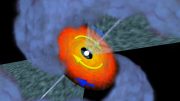
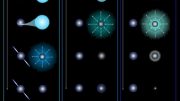

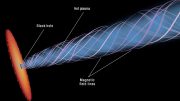
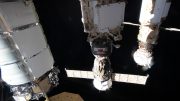
A computer simulation of the disk of material around the star, based on previous infrared observations, reveals a gap that extends from the star out to a distance of about 400 million miles — similar to the distance to the asteroid belt in our solar system. The gap likely formed when a giant planet sucked up all the nearby material, leaving a hole in the middle of the disk, the astronomers say.
now according to the International Astronomical Community this would be considered a dwarf planet. Since Pluto was demoted. This gives evidence that their (IAC) was wrong in demoting Pluto.